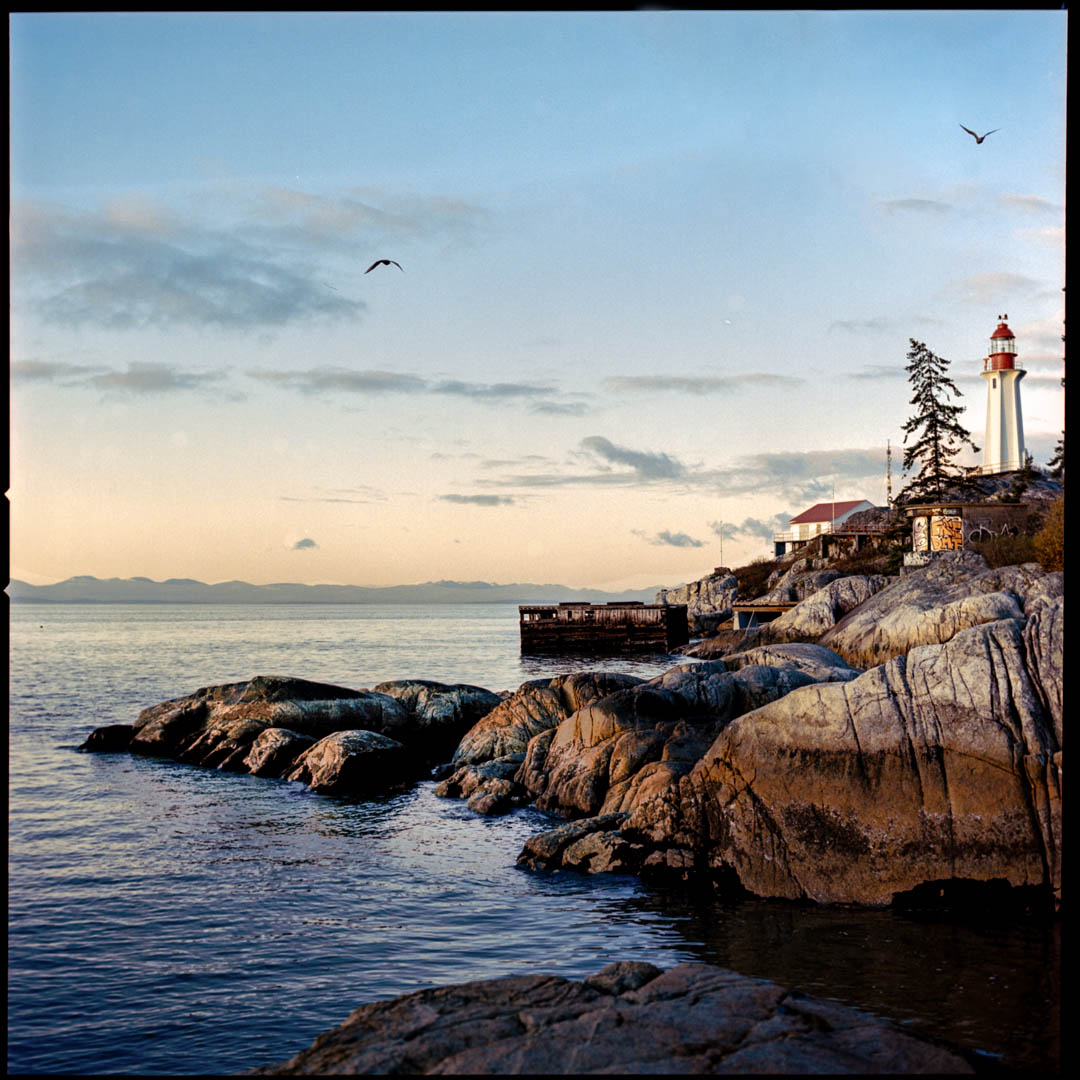When you start developing color film at home, the first thing you’ll hear about is how precise your temperature control should be.Since film developing is a chemical reaction, the temperature of the solution does affect how active that reaction is.
After more than four years of developing film, I’ve learned the hard way how strict temperature control should be to avoid ruining your negatives. Here’s what I’ve learned:
Black and white film can be developed around room temperature without worrying about minor fluctuations in temperature. Color film development requires strict temperature regulation. Any temperature changes more than 4°F above or below the required temperature will result in color shifts on the film.
I’ve developed black and white film in water that’s anywhere between 15°C (60°F) and 24°C (75°F), and haven’t had any noticeable changes in density, patchiness, or other issues. But with color film, even small changes in temperature have resulted in me losing a couple rolls due to bad technique.
What happens when I don’t get the temperature right when developing color film?
The biggest change that you will see when you’re developing color film is visible shifts in the color. It may be difficult to notice the color shifts on the negatives, but scanning and converting the negatives will reveal a significant cast.
If the temperature is too hot, or agitated too much, the film will appear much bluer than normal. While if the film is developed too cold, or not agitated enough, it will appear redder than normal. You can see this effect in the images above, where the image on the left was developed too hot and the one on the right was developed at a normal temperature.
Most people suggest keeping the film within 1°C (2°F) of the stated developing temperature for the C41 kit. Water holds temperature well, but it will fluctuate more than that amount if you don’t keep your developing tank inside a controlled water bath.
Does the bleach or blix need strict temperature control?
The bleach or blix step does require a specific temperature to work, but these steps do not need a rigorous temperature control as the developing step.
Bleach doesn’t affect the color of film — all it does is remove the exposed silver from the film. So if the bleach is 2.5°C (5°F) hotter or colder than it’s supposed to be, it won’t have a big impact on the final outcome.
The only factor that does matter is if the bleach gets too cold. If the bleach or blix gets too cold, it will not be active enough to completely clear the silver within the stated times on the developing chart.

How do I control temperature when developing color film?
There are a few different ways to get your C41 or E6 chemicals to the right temperature for developing film.
The cheapest way to get your film developer to the right temperature is to simply use the hot water from your tap, which usually comes out around the 45 or 50°C (110-125°F) temperature range depending on your hot water heater.
You will need to use a good thermometer that is capable of reading temperatures around 39°C (102°F). A temperature range that unfortunately most candy or meat thermometers won’t be able to read.
Make sure your water bath is in a separate tub from the sink — you’ll need the drain when rinsing the film between developing steps.
Then while measuring away from where the water enters the bath, open the tap once the water loses a couple of degrees, and close it when the water gets a couple of degrees too warm. This isn’t the most precise method of keeping water at the right temperature, but it does a good enough job when you’re starting out.
The sous vide method
The easiest way to keep your water at the right temperature is to use an inversion circulator, also known as a sous vide. These are precise tools that heat up and circulate the water at a specific temperature for cooking food — but they also work great for film.
With one of these tools (here’s the one that I use on Amazon), you can simply set it to the right temperature and forget it.
You can also buy precision water bath tools that are meant for chemistry labs, but these can be a little more expensive and take up unnecessary space.

How long does it take for the developer to warm up in a water bath to the right temperature for developing?
I always want to jump straight into developing film as soon as possible. But with color film, there is a certain amount of time that has to be dedicated to getting the film to the right temperature.
Once you have your water bath up to the right temperature, it will take around 30-45 minutes for the developer to heat up to the same temperature as the bath. I usually leave the film developer, bleach, fix, (or blix) and stop bath bottles in the water bath with a sous vide for an hour to ensure they are all up to the right temperature for developing film.
The stop bath and the fixer don’t technically need to be heated up to the same temperature as the developer and bleach. But by putting them in the bath, you will be keeping the entire process at the same temperature, which can be helpful.
Leaving it for an hour may not be strictly necessary, but it gives me some time to warm up the film to room temperature from the fridge, and do a couple of other tasks before getting started.

Why you should use the cold water tap when developing black and white film
When it comes to which tap to use, there is a common thread between photographers and cooks at home. I always use the cold water tap when preparing my black and white developers for one simple reason.
Using the cold water tap will result in fewer contaminants in the developer (as well as in your food). The hot water heater often has a build-up of chalk and other contaminants that are found in the water. So when you use the hot water tap, you will be adding that to the film developer.
In most cases, it’s not a problem and your developer will work just fine with the water from the hot water tap.
But just to ensure consistency, I will always use cold water when mixing my black and white film developer from concentrate. I then let the mixture stand at room temperature for 15 minutes to a half-hour before developing film.
For color film, since that developer may have to stay in the bottle for a couple of weeks, I always use distilled water. That way I can ensure that there will be no contaminants that interact with the developer over time.
Final thoughts
Developing film at home is a surprisingly easy process that will save you a lot of money compared to having it developed at a professional lab. Black and white doesn’t really need any temperature control measures at all, and color is more flexible than most people let on.
Having tools like a water circulator, (a.k.a. sous vide) at home make the C41 and E6 developing process an absolute breeze. After buying one of these, I don’t have to worry about temperature nearly as much as I used to.
I remember how stressed I was about temperature control when I first developed color film. But the entire process was a lot simpler than I thought — even when I was just using the hot water tap to get my water bath to the right temperature.
So if you are interested in the process, you should certainly pick up a color-developing kit and try it out!

By Daren
Daren is a journalist and wedding photographer based in Vancouver, B.C. He’s been taking personal and professional photos on film since 2017 and began developing and printing his own photos after wanting more control than what local labs could offer. Discover his newest publications at Soft Grain Books, or check out the print shop.



